
Rembrandt van Rijn Painting Reproductions 5 of 13
1606-1669
Dutch Baroque Painter
296 Rembrandt Paintings
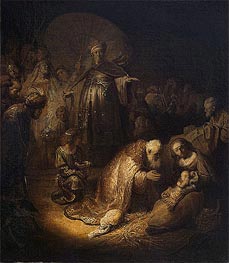
Adoration of the Magi 1632
Oil Painting
$1978
$1978
Canvas Print
$61.81
$61.81
SKU: REM-8932
van Rijn Rembrandt
Original Size: 45 x 39 cm
The State Hermitage Museum, St. Petersburg, Russia
van Rijn Rembrandt
Original Size: 45 x 39 cm
The State Hermitage Museum, St. Petersburg, Russia
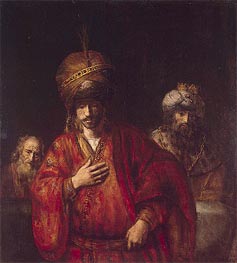
Haman Recognizes His Fate 1665
Oil Painting
$2081
$2081
Canvas Print
$84.31
$84.31
SKU: REM-8933
van Rijn Rembrandt
Original Size: 127 x 116 cm
The State Hermitage Museum, St. Petersburg, Russia
van Rijn Rembrandt
Original Size: 127 x 116 cm
The State Hermitage Museum, St. Petersburg, Russia

Portrait of an Old Woman 1654
Oil Painting
$1360
$1360
Canvas Print
$73.07
$73.07
SKU: REM-8934
van Rijn Rembrandt
Original Size: 109 x 84 cm
The State Hermitage Museum, St. Petersburg, Russia
van Rijn Rembrandt
Original Size: 109 x 84 cm
The State Hermitage Museum, St. Petersburg, Russia
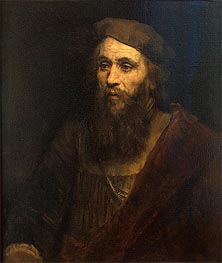
Portrait of a Man 1661
Oil Painting
$1604
$1604
Canvas Print
$78.87
$78.87
SKU: REM-8935
van Rijn Rembrandt
Original Size: 71 x 61 cm
The State Hermitage Museum, St. Petersburg, Russia
van Rijn Rembrandt
Original Size: 71 x 61 cm
The State Hermitage Museum, St. Petersburg, Russia
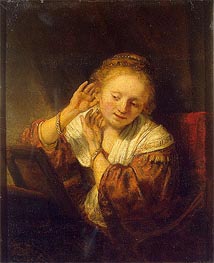
Young Woman with Earrings 1657
Oil Painting
$1410
$1410
Canvas Print
$61.81
$61.81
SKU: REM-8936
van Rijn Rembrandt
Original Size: 39.5 x 32.5 cm
The State Hermitage Museum, St. Petersburg, Russia
van Rijn Rembrandt
Original Size: 39.5 x 32.5 cm
The State Hermitage Museum, St. Petersburg, Russia
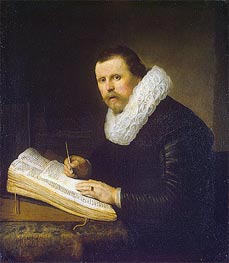
Portrait of a Scholar 1631
Oil Painting
$2229
$2229
Canvas Print
$81.77
$81.77
SKU: REM-8937
van Rijn Rembrandt
Original Size: 104.5 x 92 cm
The State Hermitage Museum, St. Petersburg, Russia
van Rijn Rembrandt
Original Size: 104.5 x 92 cm
The State Hermitage Museum, St. Petersburg, Russia
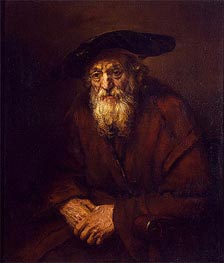
Portrait of an Old Jew 1654
Oil Painting
$1405
$1405
Canvas Print
$65.96
$65.96
SKU: REM-8938
van Rijn Rembrandt
Original Size: 109 x 85 cm
The State Hermitage Museum, St. Petersburg, Russia
van Rijn Rembrandt
Original Size: 109 x 85 cm
The State Hermitage Museum, St. Petersburg, Russia

Portrait of the Poet Jeremias de Decker 1666
Oil Painting
$1161
$1161
Canvas Print
$73.75
$73.75
SKU: REM-8939
van Rijn Rembrandt
Original Size: 71 x 56 cm
The State Hermitage Museum, St. Petersburg, Russia
van Rijn Rembrandt
Original Size: 71 x 56 cm
The State Hermitage Museum, St. Petersburg, Russia
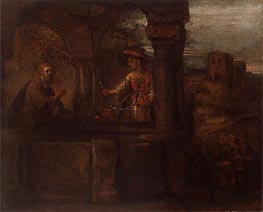
Christ and the Woman of Samaria 1659
Oil Painting
$1207
$1207
Canvas Print
$75.29
$75.29
SKU: REM-8940
van Rijn Rembrandt
Original Size: 60 x 75 cm
The State Hermitage Museum, St. Petersburg, Russia
van Rijn Rembrandt
Original Size: 60 x 75 cm
The State Hermitage Museum, St. Petersburg, Russia
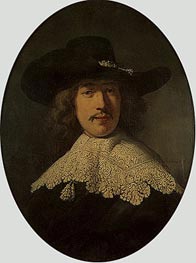
Portrait of a Young Man with a Lace Collar 1634
Oil Painting
$1775
$1775
Canvas Print
$113.53
$113.53
SKU: REM-8941
van Rijn Rembrandt
Original Size: 70.5 x 52 cm
The State Hermitage Museum, St. Petersburg, Russia
van Rijn Rembrandt
Original Size: 70.5 x 52 cm
The State Hermitage Museum, St. Petersburg, Russia
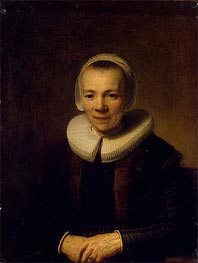
Portrait of Baertje Martens c.1640
Oil Painting
$1573
$1573
Canvas Print
$86.72
$86.72
SKU: REM-8942
van Rijn Rembrandt
Original Size: 76 x 56 cm
The State Hermitage Museum, St. Petersburg, Russia
van Rijn Rembrandt
Original Size: 76 x 56 cm
The State Hermitage Museum, St. Petersburg, Russia
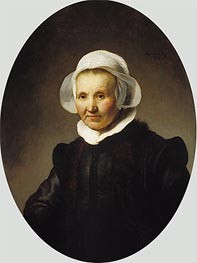
Portrait of Aeltje Uylenburgh 1632
Oil Painting
$1780
$1780
Canvas Print
$69.83
$69.83
SKU: REM-8943
van Rijn Rembrandt
Original Size: 73.7 x 55.8 cm
Boston Museum of Fine Arts, Massachusetts, USA
van Rijn Rembrandt
Original Size: 73.7 x 55.8 cm
Boston Museum of Fine Arts, Massachusetts, USA

Portrait of Jan Rijcksen and his Wife, Griet Jans ... 1633
Oil Painting
$2643
$2643
Canvas Print
$61.81
$61.81
SKU: REM-8944
van Rijn Rembrandt
Original Size: 114.3 x 168.6 cm
The Royal Collection, London, UK
van Rijn Rembrandt
Original Size: 114.3 x 168.6 cm
The Royal Collection, London, UK
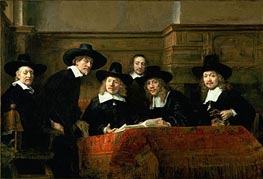
The Syndics (De Staalmeesters) 1662
Oil Painting
$3807
$3807
Canvas Print
$61.81
$61.81
SKU: REM-8945
van Rijn Rembrandt
Original Size: 191.5 x 279 cm
Rijksmuseum, Amsterdam, Netherlands
van Rijn Rembrandt
Original Size: 191.5 x 279 cm
Rijksmuseum, Amsterdam, Netherlands

Portrait of an Elderly Man 1667
Oil Painting
$1240
$1240
Canvas Print
$76.83
$76.83
SKU: REM-8946
van Rijn Rembrandt
Original Size: 81.9 x 67.7 cm
Mauritshuis Royal Picture Gallery, The Hague, Netherlands
van Rijn Rembrandt
Original Size: 81.9 x 67.7 cm
Mauritshuis Royal Picture Gallery, The Hague, Netherlands
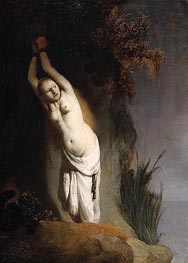
Andromeda c.1631
Oil Painting
$923
$923
Canvas Print
$61.81
$61.81
SKU: REM-8947
van Rijn Rembrandt
Original Size: 34 x 24 cm
Mauritshuis Royal Picture Gallery, The Hague, Netherlands
van Rijn Rembrandt
Original Size: 34 x 24 cm
Mauritshuis Royal Picture Gallery, The Hague, Netherlands
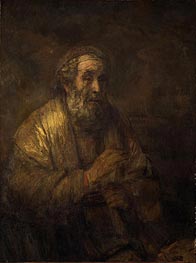
Homer 1663
Oil Painting
$1323
$1323
Canvas Print
$70.69
$70.69
SKU: REM-8948
van Rijn Rembrandt
Original Size: 107 x 82 cm
Mauritshuis Royal Picture Gallery, The Hague, Netherlands
van Rijn Rembrandt
Original Size: 107 x 82 cm
Mauritshuis Royal Picture Gallery, The Hague, Netherlands
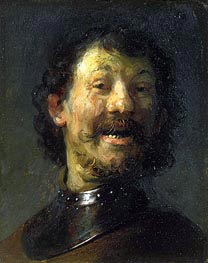
Smiling Man c.1629/30
Oil Painting
$835
$835
Canvas Print
$61.81
$61.81
SKU: REM-8949
van Rijn Rembrandt
Original Size: 15.4 x 12.2 cm
Mauritshuis Royal Picture Gallery, The Hague, Netherlands
van Rijn Rembrandt
Original Size: 15.4 x 12.2 cm
Mauritshuis Royal Picture Gallery, The Hague, Netherlands
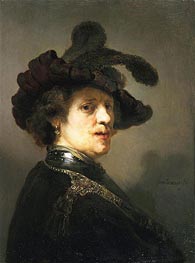
Portrait of a Man with Hat with Plume c.1635/40
Oil Painting
$1357
$1357
Canvas Print
$69.67
$69.67
SKU: REM-8950
van Rijn Rembrandt
Original Size: 62.5 x 47 cm
Mauritshuis Royal Picture Gallery, The Hague, Netherlands
van Rijn Rembrandt
Original Size: 62.5 x 47 cm
Mauritshuis Royal Picture Gallery, The Hague, Netherlands
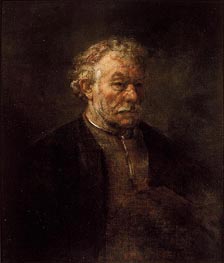
Portrait of Older Man 1650
Oil Painting
$1263
$1263
Canvas Print
$78.53
$78.53
SKU: REM-8951
van Rijn Rembrandt
Original Size: 80.5 x 66.5 cm
Mauritshuis Royal Picture Gallery, The Hague, Netherlands
van Rijn Rembrandt
Original Size: 80.5 x 66.5 cm
Mauritshuis Royal Picture Gallery, The Hague, Netherlands
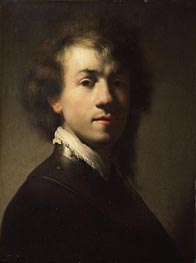
Portrait of Rembrandt at around Age of 23 c.1629
Oil Painting
$994
$994
Canvas Print
$61.81
$61.81
SKU: REM-8952
van Rijn Rembrandt
Original Size: 37.9 x 28.9 cm
Mauritshuis Royal Picture Gallery, The Hague, Netherlands
van Rijn Rembrandt
Original Size: 37.9 x 28.9 cm
Mauritshuis Royal Picture Gallery, The Hague, Netherlands
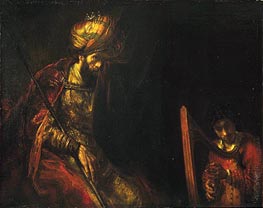
Saul and David c.1650/55
Oil Painting
$1829
$1829
Canvas Print
$73.93
$73.93
SKU: REM-8953
van Rijn Rembrandt
Original Size: 130 x 164.5 cm
Mauritshuis Royal Picture Gallery, The Hague, Netherlands
van Rijn Rembrandt
Original Size: 130 x 164.5 cm
Mauritshuis Royal Picture Gallery, The Hague, Netherlands
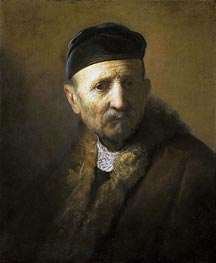
Study of a Man's Head c.1630/31
Oil Painting
$965
$965
Canvas Print
$61.81
$61.81
SKU: REM-8954
van Rijn Rembrandt
Original Size: 46.9 x 38.8 cm
Mauritshuis Royal Picture Gallery, The Hague, Netherlands
van Rijn Rembrandt
Original Size: 46.9 x 38.8 cm
Mauritshuis Royal Picture Gallery, The Hague, Netherlands
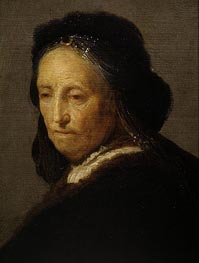
Study of an Old Woman (Rembrandt's Mother) c.1630/35
Oil Painting
$628
$628
Canvas Print
$61.81
$61.81
SKU: REM-8955
van Rijn Rembrandt
Original Size: 18.2 x 14 cm
Mauritshuis Royal Picture Gallery, The Hague, Netherlands
van Rijn Rembrandt
Original Size: 18.2 x 14 cm
Mauritshuis Royal Picture Gallery, The Hague, Netherlands